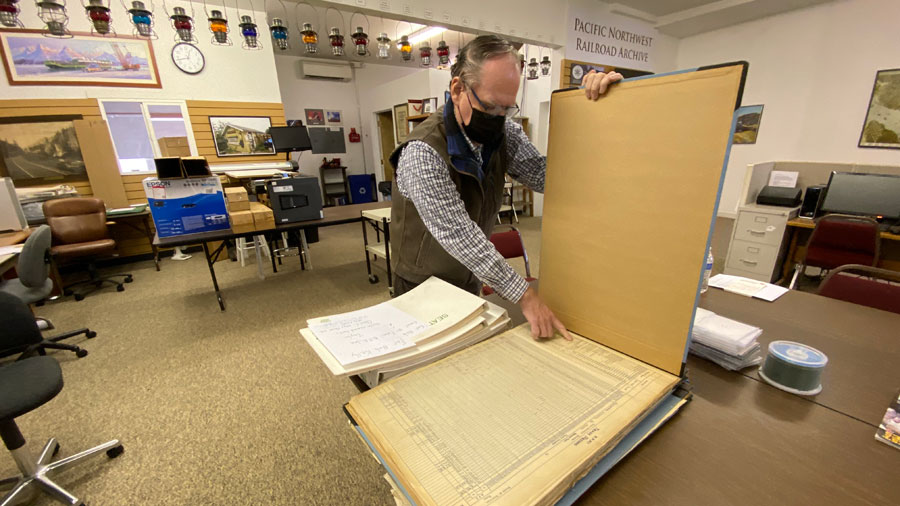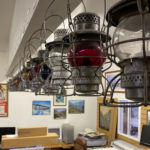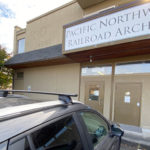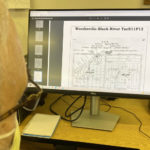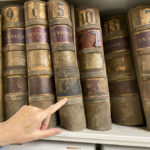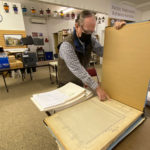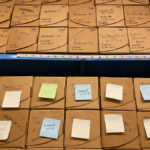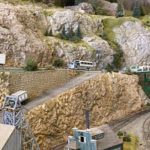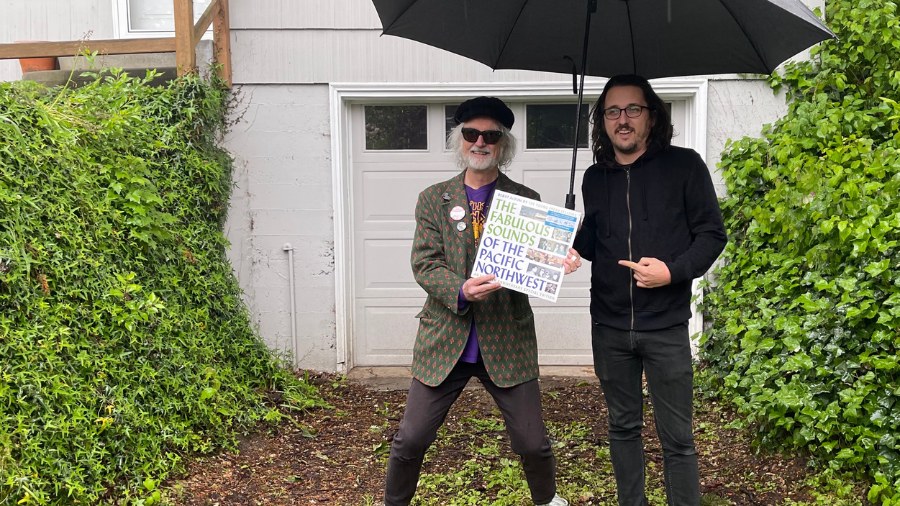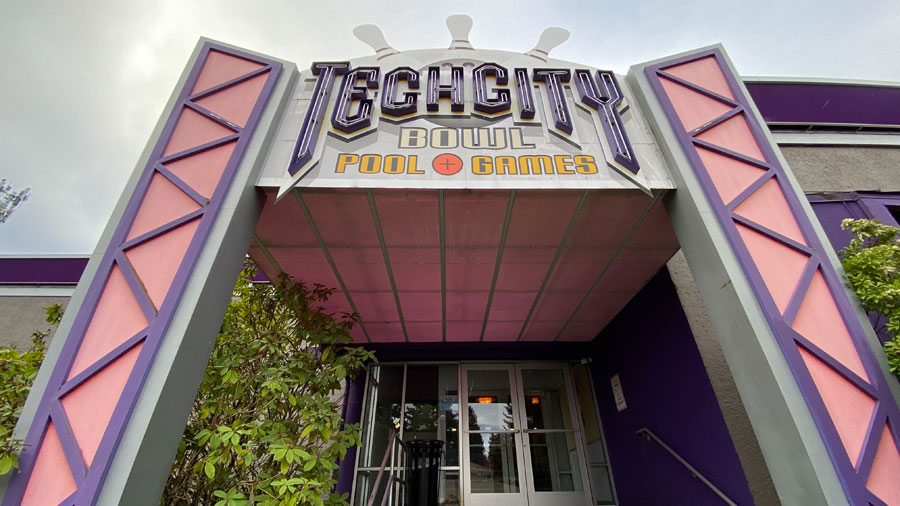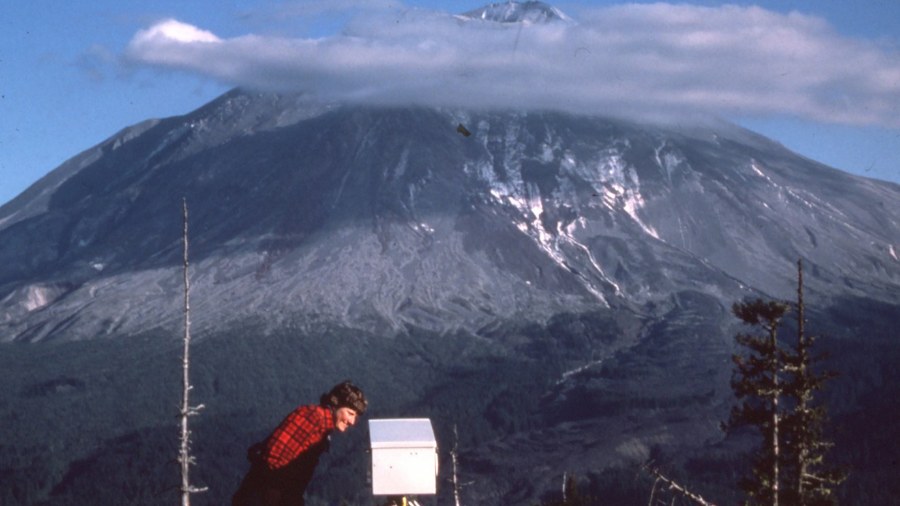Priceless archive keeps the history of Pacific Northwest trains running
Oct 13, 2021, 11:09 AM | Updated: 12:44 pm
A unique partnership between five nonprofit groups devoted to Northwest railroad history means an incredible archive of priceless photos and documents is being preserved and made accessible in person and online from a location in Burien.
In the past year or so, the publicly owned National Archives in Seattle has often been at the center of attention as the facility faced a threat – now passed, thankfully – of possible closure and sale, and then relocation of its priceless contents.
Meanwhile, a broad and diverse “ecology” of private groups has continued to quietly preserve and share the raw materials of history in specific topic areas. Regardless of politics or other outside forces, local organizations such as the Puget Sound Maritime Historical Society and the Black Heritage Society of Washington State continue to collect documents and photos in their particular subject areas, and have devoted followings of grateful researchers and others who depend on access to their materials.
But there’s something about trains and railroad history that can seem to transcend the popularity and broad appeal of just about any other subject area. It’s almost as if there’s something magical about trains, which can a little tough to fully understand, let alone explain.
During a visit to the Pacific Northwest Railroad Archive a few days ago, KIRO Radio asked board president Bob Kelly why it is that so many people of all ages seem to have an obsession with old locomotives, old railroad timetables, or old depots.
“I don’t know, but I certainly have it,” Kelly said. “You know, if I could stop and see a train go by, I will stop and see a train go by, or I will go to the depot.”
“And I can’t tell you what kind of locomotive it is, I can’t tell you what kind of air pump it has or any of that like a lot of people can,” Kelly continued. “But there’s this feeling about it, that a lot of us have, like, ‘Whoa, boys — I’m in the right place.’”
Founder and director emeritus of the Pacific Northwest Railroad Archive is Gary Tarbox, who, in the part of his life when he had a day job, had a four-decade career in high tech at Boeing and Microsoft.
Tarbox is the architect, or maybe you could say “Empire Builder,” of the partnership between five groups that formed the archive – Cascade Rail Foundation; Great Northern Railway Historical Society; Northern Pacific Railway Historical Association; Spokane, Portland & Seattle Railway Historical Society; and the Boeing Employees Model Railroad Club.
“We are a consortium of five different organizations, all doing something that no one of them could do alone,” Tarbox told KIRO Radio from a seat at the main worktable in the research room of the archive. “In other words, we pooled our resources to do something that’s way above what any one organization could really finance [on its own].”
Under Tarbox’s early leadership, the best thing the group did was buy an old plumbing supply building in Burien back in 2010 when the real estate market was still reeling from the Great Recession. Tarbox says it’s critical for any archive to know it will never have to move, so decisions can be made to best adapt the structure and interior improvements to long-term or even permanent storage.
Though Tarbox doesn’t say so, this is probably something to which the staff at the National Archives in Seattle can likely personally attest.
Even before COVID, a visit to the Pacific Northwest Railroad Archive in person required an appointment, and that’s still the case now as volunteers and staff are back on-site and operating at reduced capacity. There are a dozen work stations for in-person access and for searching the online holdings, and the archive also serves large numbers of users by email and phone from all over the United States.
The heart of the archive is composed of climate-controlled storage areas located within the building. Here you’ll find old ledgers and maps, railroad timetables, and thousands and thousands of photos. Much of it is organized in what’s called “compact storage” – solidly-built steel shelves that actually move back and forth across the floor in order to maximize utilization of space. It’s a sophisticated and professional operation, and likely a stark contrast to the years before the archive existed, when many of the materials preserved there now were spread out amongst countless private basements around the region.
Kent Sullivan knows the Pacific Northwest Railroad Archive very well. He’s based on the Eastside, and does a lot of research and writing about Northern Pacific Railway history – including the old Belt Line, where the new rails-to-trails conversion “Eastrail” now runs through Kirkland and Bellevue.
Sullivan really appreciates the volume and quality of material at the Pacific Northwest Railroad Archive, and the assistance of staff and volunteers.
“Having a place that has a critical mass of material doesn’t mean that there’s no searching and scratching your head and trying to figure out where to look,” Sullivan told KIRO Radio. “But at least you have some confidence that if there is an answer, it’s likely to be in that building, and that there’s a staff – some paid, mostly volunteers – who are constantly paying attention to that collection, doing an inventory, trying to get it organized, cross-referenced, get it digitized.”
“It’s just an enormous help,” Sullivan added.
Another person who appreciates the archive is Gus Melonas. He’s a third-generation Northwest railroad guy who recently retired from BNSF Railway after a long career, most recently in public affairs. If his name sounds familiar, he was heard and seen often in the past via local media as a spokesperson for the company.
BNSF has supported the archive financially, as have many local companies and individuals and public funders. Melonas told KIRO Radio that BNSF – for whom he still consults – appreciates that the consortium exists, and that the groups involved take the care and preservation of Northwest railroad history seriously. In his prior role, Melonas often called on archive staff for assistance.
“When I was director of public affairs,” Melonas said, “I might get a call [with questions about] a circus train, and I’d need information on what type of rail cars were used to transport elephants, or information about an old train station that no longer exists, … [or about] an old depot somewhere. They were a great help.”
Far from being a niche topic or an esoteric element of industrial or corporate record-keeping, railroad history goes beyond mere nostalgia for steam engines or old passenger terminals. In the Pacific Northwest as early as the 1870s, railroads were one of the first heavy industries and among the most powerful landowners. Siting of route through a community – or choice of Tacoma over Seattle as the terminus of a transcontinental line – could make or break a particular town, creating wealth for some and driving others into bankruptcy.
Along with Puget Sound, Lake Washington, and navigable rivers, railroads were also key to transportation of people, raw materials, and finished goods. They effectively opened up large areas to new settlement and to industries that boomed – for a time, at least – including large-scale agriculture, timber, and mining.
Because of its primary role, railroad history in the Pacific Northwest is a kind of hidden super-structure underpinning so many events in the timeline of post-settlement growth and development. It’s big picture history, but like all history, it can also be pretty granular and specific, too.
Board president Bob Kelly described how the archive recently came to the aid of a land surveyor in the Chehalis area who was stymied in a project by a lack of accurate information.
“He was surveying some property and nothing lined up,” Kelly said. “And so he contacted us because the survey [information he was working with] started in the middle of the railroad [tracks]. Except, the railroad it started from was where the railroad was located in 1890, not where the railroad was today.”
“His crew had gone out to where the railroad was today,” Kelly says, but hadn’t had much luck.
At the archives in Burien, they had the old map that the old Chehalis survey information was based on.
“Soon as we showed him where the railroad was in 1890,” Kelly continued, “all of a sudden, everything lined up.”
One thing that becomes clear when talking with Bob Kelly, Gary Tarbox, and even Kent Sullivan is that in any gathering of Northwest railroad history buffs, each person will have one favorite railroad they cherish above all others. Around here, this usually means the Great Northern, the Northern Pacific, or maybe the Milwaukee Road – or maybe the Seattle, Lake Shore and Eastern (now the route of the Burke Gilman Trail), or perhaps the Spokane, Portland & Seattle.
These rail history buffs don’t typically hate the other railroads, but they do love their favorites, and it does seem that good-natured rivalries and debates over superiority enliven many such railroad history gatherings.
And maybe those rivalries help keep the stories of the individual railroads alive, because most of the individual railroads themselves were ultimately folded into what’s now BNSF more than 50 years ago.
Archive director emeritus Gary Tarbox says the specific date of the merger is well-known by railroad researchers and historians in the Pacific Northwest. It forms a kind of dividing line between railroad eras, which also then informs the larger collecting and programming philosophy for the organization.
“We tend to view March 2, 1970, as the last day of the independent railroads, the Great Northern and the Northern Pacific,” Tarbox said, “because they all went into the Burlington Northern from our perspective here. So we consider that ‘merger day.’”
“But post-merger, we still follow the rails – where it went, how communities were served,” Tarbox continued. “We’re not so much focusing on the railroads, but we’re focusing on the communities served by the railroads.”
Thus, whether you’re a Northern Pacific fan like Gary Tarbox or Kent Sullivan, or a Great Northern guy like Bob Kelly – or even if you don’t have a favorite – railroad history is really just regional history.
Either way, a visit, virtually or in-person, to the Pacific Northwest Railroad Archive will likely have you saying, “Whoa, boys. I’m in the right place.”
You can hear Feliks every Wednesday and Friday morning on Seattle’s Morning News, read more from him here, and subscribe to The Resident Historian Podcast here. If you have a story idea, please email Feliks here.

